Below, I’ve shared my top self-development and leadership books. I welcome any recommendations you might have or discussions on the topics covered in these books. If you haven’t read any of these titles, I’d love to hear from you once you do!
Turn The Ship Around#
By: L. David Marquet#
synopsis#
This book tells the true story of the USS Santa Fe’s transformation from the worst-performing fast attack submarine to the best in the fleet. Captain Marquet achieved this by radically shifting from a “leader-follower” model to a “leader-leader” model. This involved empowering every crew member to take ownership, make decisions, and develop their competence, ultimately fostering a highly engaged, innovative, and effective team that excelled even in his absence.
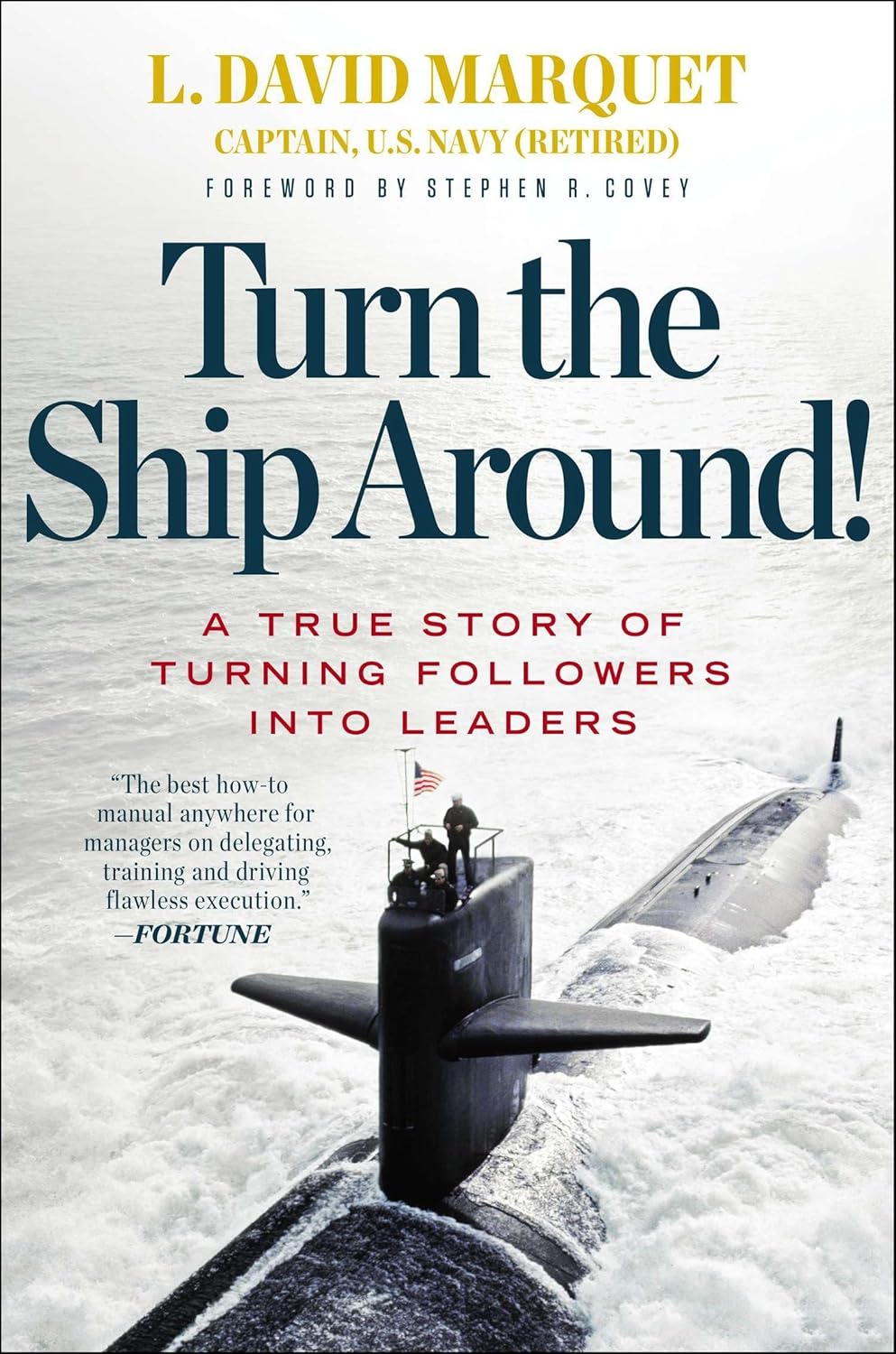
Thoughts#
As a young submariner, this book was passed around our ship. Its crumpled cover, dog-eared pages, and countless highlighter marks showed how much it resonated with us. Being written by a “brother of the phin,” submariners took pride in continuing Captain Marquet’s philosophy of an entire crew of leaders. The 3 Cs became our ethos:
Control : Those closest to the information own the information. State your intention; don’t ask for permission.
Competence : It’s everyone’s responsibility to ensure that necessary skills and knowledge are shared and trained upon. As leaders, you have an obligation to ensure your subordinates encounter as few obstacles as possible to learning.
Clarity : Providing a clear understanding of the organization’s purpose, goals, and guiding principles is essential for aligning decisions autonomously. When the crew understands the “Why,” you begin to act as one.
This book was the initial push I needed to believe in myself and take ownership of everything I touch. When you believe in yourself and those around you, that belief grows. Belief turns into tangible results when everyone understands what to believe in, and paradoxically, achievements increase with less intervention from above.
Links#
Atomic Habits#
By: James Clear#
Synopsis#
“Atomic Habits” offers a compelling framework for building good habits and breaking bad ones, emphasizing the power of small changes. The author argues that significant improvements don’t come from grand, life-altering decisions but from the aggregation of marginal gains – tiny, consistent actions performed repeatedly.
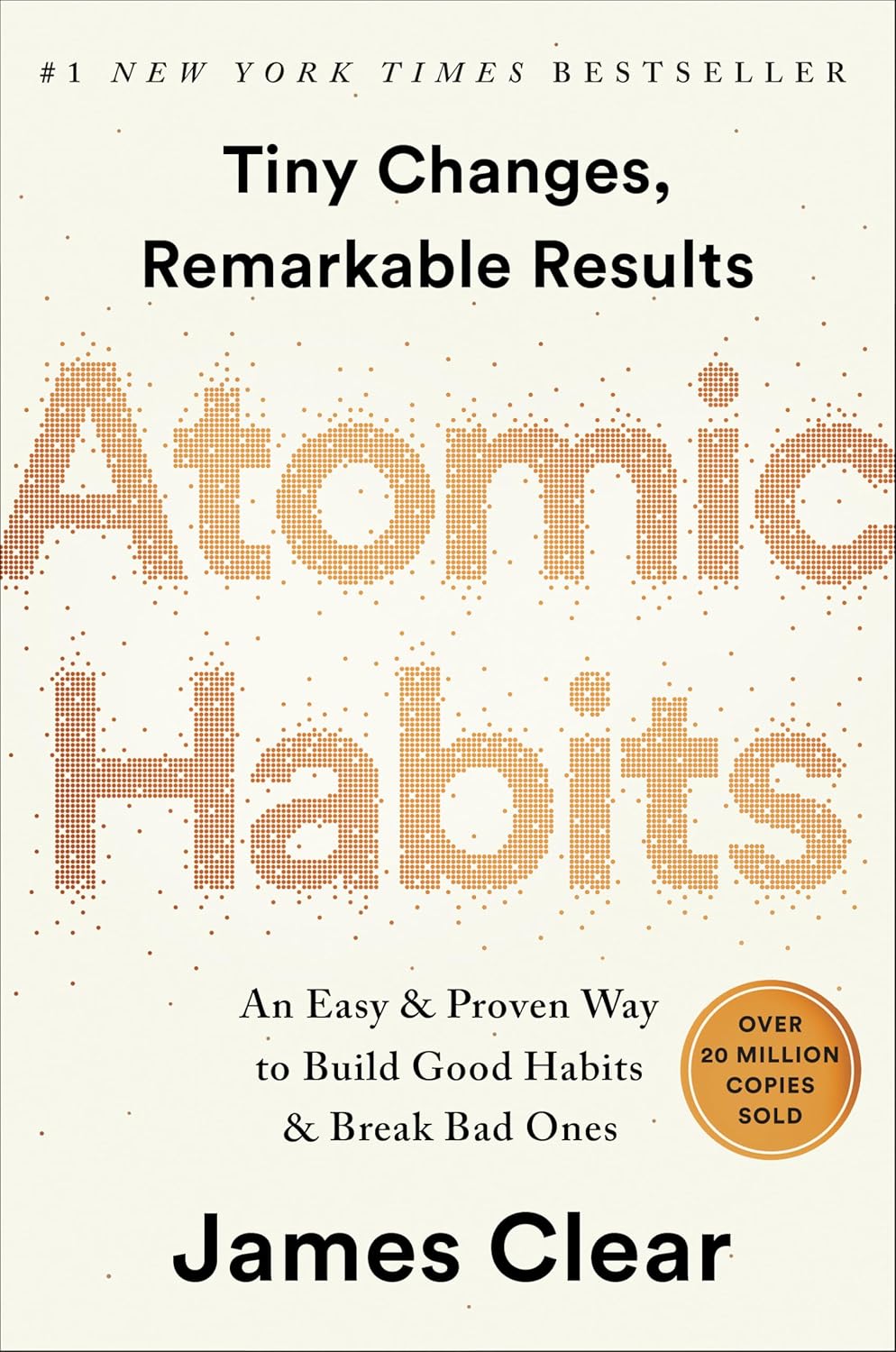
Thoughts#
For me, “Atomic Habits” is all about the power of consistency and discipline. Setting lofty goals and expecting to complete them with willpower alone, no plan, and little strategy is a recipe for disaster. Clear suggests that the most productive way to achieve positive change in your life is through small, incremental steps. Unfortunately, this theory is just as effective for bad habits. With this in mind, bad habits can become somewhat dangerous, considering that simply moving mindlessly through your day can build habits that take months or even years to overcome. Maintaining a state of mindfulness throughout your day, in my opinion, goes a long way toward accomplishing any goals and maintaining a healthy lifestyle.
James Clear outlines a four-rule system called “the habit loop” that he believes will produce strong habits. Personally, I find the fourth rule to be a bit troublesome. Rewarding yourself for taking action on your newly forming habit can, in turn, create a habit of needing that reward every time you complete the action. If that reward is something unhealthy, you’re stacking bad on top of good, thus creating more work for yourself down the road. I’ve personally avoided this pitfall by using moments of positive mental reinforcement. In other words, I tell myself, “Good job! You’re doing this for your family, and they value your dedication! You are setting yourself up to be a role model for your family.” Cheesy, I know, but family is my North Star. My recommendation for those putting “the habit loop” into practice would be to have a conversation with yourself when you reach rule four.
Links#
Good To Great#
By: Jim Collins#
Synopsis#
“Good to Great” explores what differentiates companies that make the leap from merely good performance to truly great, sustained results. Jim Collins identifies key principles and practices that transcend industry and era. Central to his findings are concepts like Level 5 Leadership, “First Who, Then What,” the Hedgehog Concept, a Culture of Discipline, and the Flywheel Effect. The book argues that greatness isn’t about sudden breakthroughs but about persistent, disciplined effort applied to fundamental principles.
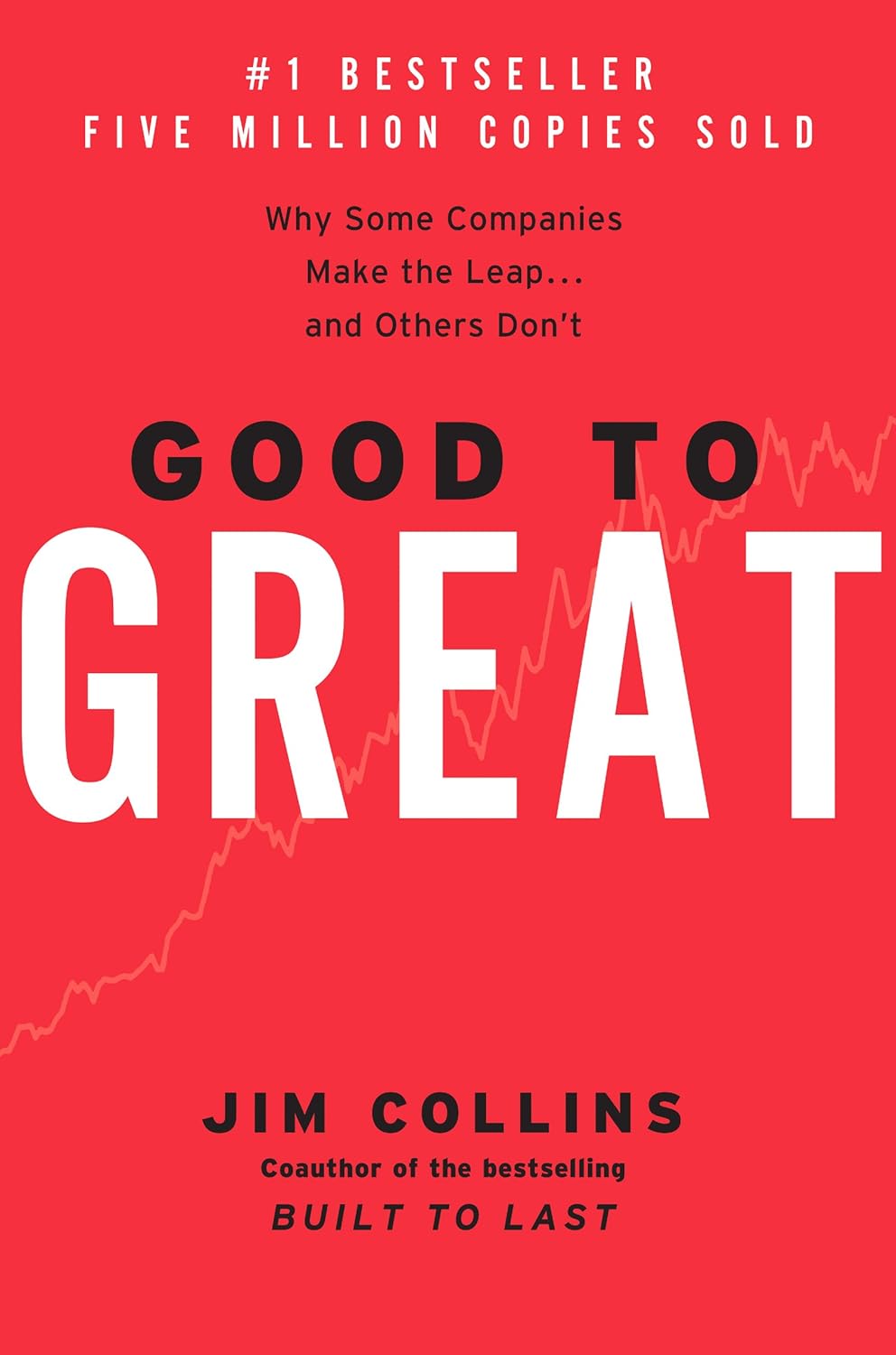
Thoughts#
This book presents many concepts that I found to be areas I should retain and focus on. Starting with “First Who, Then What”—this concept is near and dear to my heart! A few years ago, I was looking for a career change and requested a move to another section within the agency I directly support to continue my personal growth. The section that selected me conducted an interview where I was asked about my knowledge of Cisco, Call Manager, and other Cisco Collaboration solutions. I answered honestly, stating that I had no experience but was excited for a challenge and to become crucial to the team. I believe the Chief Warrant Officer in charge of the shop saw that while I wasn’t ready to “drive the bus,” I was someone worth having on the team. Since then, I’ve taken on every challenge presented to me and taken full ownership of its success or potential failure.
To me, this feels like the “First Who, Then What” concept. He sensed that I would be a good match for his team, knowing there wasn’t yet a set goal for me to achieve. In time, I paved the way to my place within the team, making me feel far more valued and accelerating my development much faster than if I had been selected to move elsewhere. My goal is to follow in his footsteps and adhere to the “First Who, Then What” concept by taking time to see what a teammate may be capable of in the future, rather than seeing only what I believe is needed at the time of hiring. Success is a moving target.
The concept of “The Flywheel Effect” is another key point from the book that really stuck with me. I believe that success is not something achieved overnight but rather built over time. Foundations are key! You start slow with new concepts—reading, listening, and watching content to understand the basics. Then you review all the content repeatedly, slowly gathering more and more until you are confident in what you are attempting to accomplish. As you take those learned concepts and put them into practice, you learn efficiencies that work best for you, increasing productivity, followed by challenging yourself with more difficult and advanced concepts. All of this is possible by maintaining self-discipline and taking action on your goals one step at a time, rather than trying to immediately sprint.
Links#
The Culture Code#
By: Daniel Coyle#
Synopsis#
“The Culture Code” by Daniel Coyle identifies three core skills that enable highly successful groups to build strong, cohesive cultures: building safety, sharing vulnerability, and establishing purpose. Coyle argues that culture isn’t a nebulous concept but a set of living relationships driven by constant, subtle signals that foster trust, collaboration, and collective effort toward a shared goal. He illustrates these principles with fascinating case studies, from sports teams to military units, demonstrating how effective communication and psychological safety lead to exceptional performance.
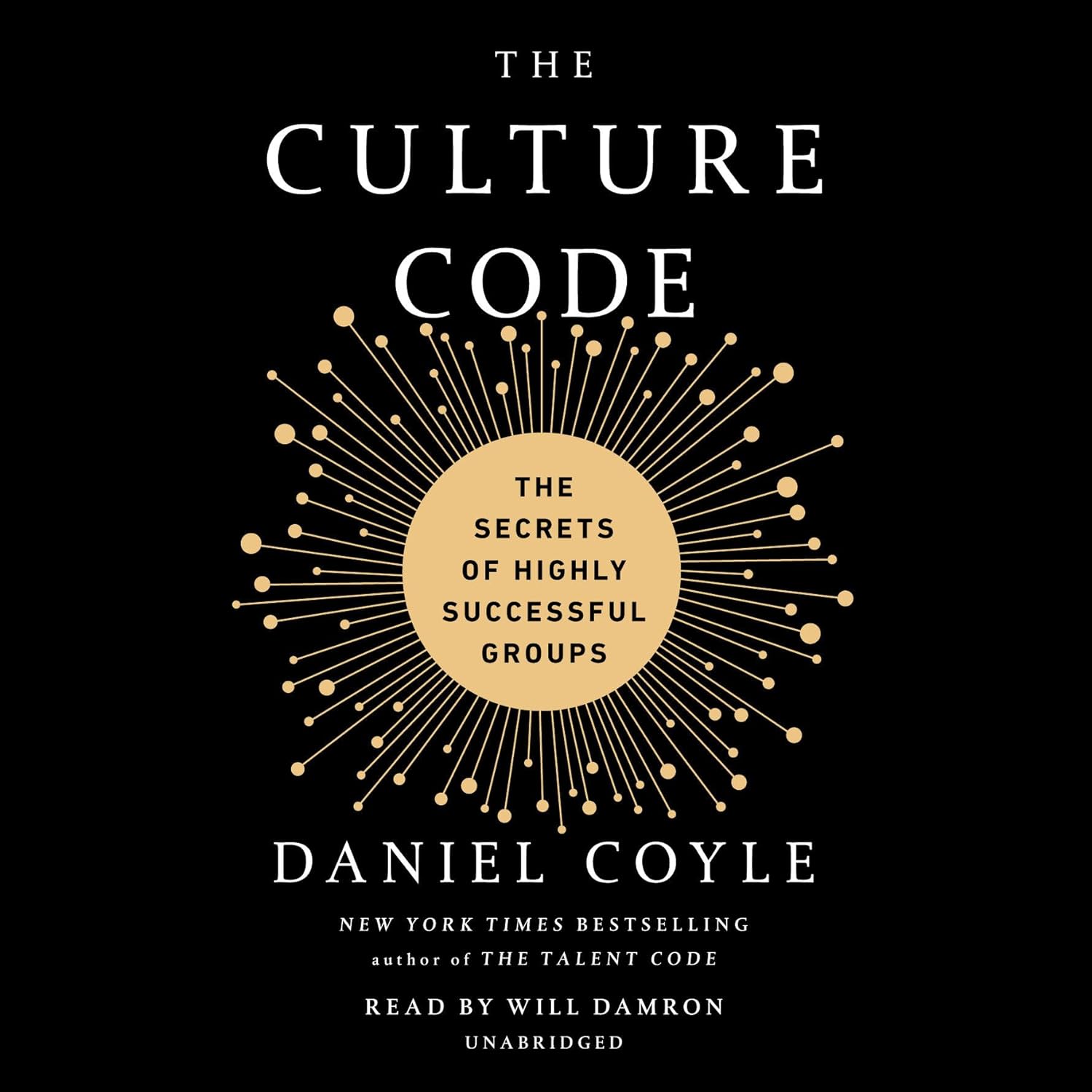
Thoughts#
“The Culture Code” is a must-read! The number one component of any business is the people you work with every day. Getting the most out of your peers, superiors, and subordinates can be heavily influenced by the culture you foster. The three major takeaways from the book are building safety, sharing vulnerability, and establishing purpose.
Starting with building safety, people are more likely to speak out and offer their best ideas when they feel secure. Additionally, when people feel secure, they are more likely to stay longer. I would like to see the current culture of jumping jobs every few years change, and I believe that change comes from people feeling more secure at work.
Second is sharing vulnerability. Admitting that you are wrong or feeling insecure about things in life or at work is not a sign of weakness; rather, it builds on the feeling of inclusion. Being vulnerable shows trust in others, which then builds a sense of belonging through trust.
Finally, you have establishing purpose. When groups have a clear sense of why they are part of a group and why the group exists, they are far more willing to take action. Even more impressively, they are more likely to take action toward that “why” without direct instruction.
Links#
Creativity Inc#
By: Ed Catmull#
Synopsis#
“Creativity, Inc.” by Ed Catmull, co-founder of Pixar Animation Studios, offers a candid look into the principles and practices that built and sustained Pixar’s remarkably innovative culture. It asserts that true creativity isn’t about isolated genius but emerges from a work environment that actively removes obstacles to inspiration, embraces risk and failure as part of the learning process, and prioritizes people and their collaborative potential above all else. The book provides a practical guide for fostering a dynamic environment where groundbreaking ideas can flourish, even in the face of inevitable challenges.
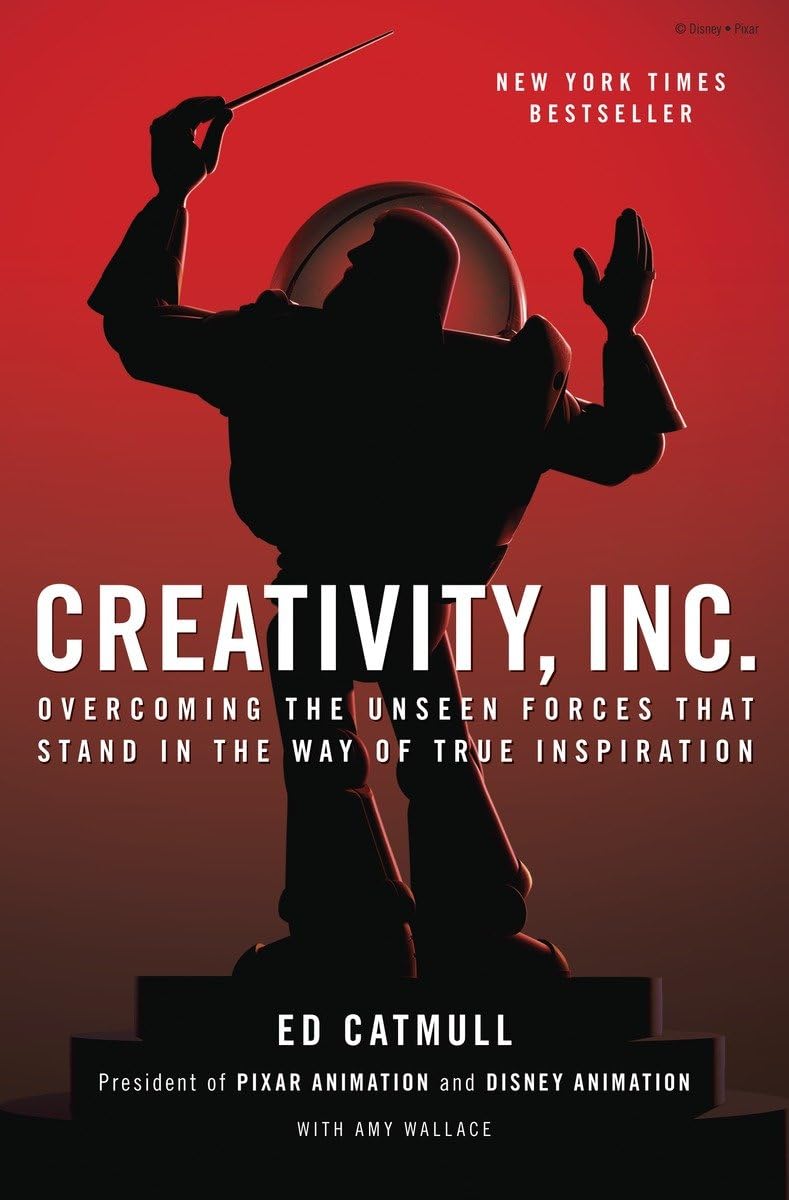
Thoughts#
“Creativity Inc.” offers some of the most unique recommendations of all the books I’ve read—from protecting the “ugly baby” to embracing failures, and even encouraging radical candor. The processes Ed Catmull put into place clearly had incredible results at Pixar. Within the military, there’s a common phrase, “the good idea fairy,” referring to half-baked thoughts that were implemented without enough time to develop. Rather than shooting down every “good idea fairy” or blindly implementing ideas without group consideration, I believe Catmull would recommend working through the initial idea, developing it with more purpose, and thoroughly considering its impact. Some ideas would likely grow into strong practices, while others would be pruned, with lessons learned to produce better ideas in the future.
Embracing failure is a very difficult idea to accept within the military; failure is “never an option,” and every task is often willed into success through brute force. “Creativity Inc.” suggests that rather than forbidding failure, we can allow everyone the grace of smaller failures. Learning how not to do something can often be a far better teacher than learning how to do something. As an example of how accepting failure can work in your favor, consider banks issuing business loans. If you’ve had a small business in the past that failed, this won’t exclude you from being able to obtain loans for other businesses in the future. In fact, many banks will be interested to hear what you learned from the experience and what practices you’ve put in place to avoid future failure.
Finally, radical candor. Telling your bosses that something is a bad idea can be scary, especially knowing that your boss may take offense. Ed Catmull suggests that having a forum where all are welcome to express their thoughts respectfully and without fear can produce some of the best results ever achieved by your team. Implement a review process for projects where everyone with a vested interest can sit down and speak freely about the project.
Links#
Start With Why#
By: Simon Sinek#
Synopsis#
“Start with Why” by Simon Sinek argues that truly inspiring leaders and organizations, unlike most, communicate from the inside out, beginning with their “Why”—their purpose, cause, or belief—before moving to “How” they do it and “What” they do. Sinek posits that people aren’t just buying products or services; they are buying into the “Why” behind them, fostering deeper trust and loyalty. He uses his “Golden Circle” framework to illustrate this powerful concept, demonstrating how a clear sense of purpose inspires action and differentiates great companies from their competitors.

Thoughts#
The main takeaway of “Start With Why” is “the Golden Circle.” Within any organization, everything we do should start with why we should do something, then how we do something, and finally what that something is. People are not invested in what something is unless they know why it exists. Having only a “what” makes your product a commodity—something that merits no loyalty or consideration. But when starting with “why,” your product is bought because of a purpose. People align with beliefs and a sense of purpose, often to a point of great inconvenience. When you start with “why,” everyone from yourself to your customer will become invested in the mission, leading to greater success.
Links#
Final Thoughts#
After reading the books above and many more, I’ve started to notice recurring trends. These trends are now what I implement in my own life to improve as a person and develop as a leader. My key takeaways are listed below:
“The Why”#
is paramount. People will never truly buy into what something is unless they understand the deeper motivation behind it. Success will only be achieved when you understand your meaning in life and the meaning within the work you do. Take the time to reflect on your motivations and make that your North Star. Apply that same process within your work, and results are a guarantee.
Discipline#
is essential. Having a great idea is only the beginning. You must also dedicate consistent effort to that idea. Maintaining consistent action is the key to success. Create a schedule for yourself and avoid breaking it (within reason). Discipline demonstrates reliability and can be a key factor in distinguishing one candidate from their peers.
People are your mission.#
Without people, any product you sell is worth nothing. You need to genuinely value your customers and treat them as individuals, rather than just numbers. Employees, from the top to the bottom of an organization, should feel like valued members of the team. Ideas come from all levels! Ignoring a junior teammate could be a costly mistake; their fresh perspective might just be the magic you were missing.
People are not machines.#
Computers and machines have hard-set capabilities, unchanging and fixed. People are not machines! Everyone is capable of growth and atrophy. Foster an environment where your people can grow and advance toward their goals, lest you wish for declining performance. People cannot be willed into following your command; simply stating an order won’t produce your desired results. You are better served selling the “Why” and allowing everyone to find their “how” and “what” within that “Why.”
Mistakes happen,and they’re opportunities.#
Promoting an environment of fear will be your undoing. The security of being allowed to fail and learn from that mistake will build a stronger employee and group. People naturally want to help. When we allow ourselves to fail and learn from mistakes, we also allow others to step in and guide our growth. We begin to collaborate more and find that the group is more willing to inconvenience themselves for the betterment of the whole.
Small steps lead to giant leaps.#
Most people have grand dreams. Our biggest setback is the misconception that we can just jump all the way to the finish line. “Jumping in with both feet” is not the same as taking too big of a leap. You should be committed to your goal but also understand that there is a path to the goal’s finish line. Anything worth doing is worth the slow and sometimes agonizing effort of slowly and deliberately progressing. This allows for a stronger foundation and can actually encourage exponential growth over time.